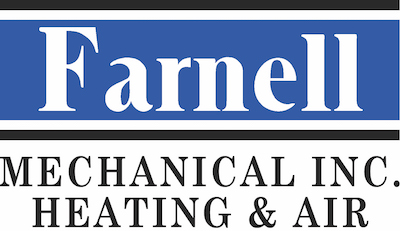
You shouldn’t have to give up comfort or empty your wallet to keep your house at a pleasant temp during the summer.
But what is the right temp, exactly? We review recommendations from energy professionals so you can choose the best temperature for your loved ones.
Here’s what we recommend for the most energy-efficient setting for air conditioning in Auburn and Opelika.
Recommended Thermostat Settings for Summer
Most people find using the thermostat at 72-73 degrees is most comfortable. However, if there’s a sizeable difference between your interior and outside temps, your electrical bills will be bigger.
This is our advice based on the U.S. Department of Energy (DOE) and ENERGY STAR®.
While at home: 78 degrees. While that appears warm, there are methods you can keep your residence cool without having the AC running constantly.
Keeping windows and blinds shut during the day keeps cold air where it needs to be—within your home. Some window solutions, like honeycomb shades or plantation shutters, are made to deliver more insulation and improved energy savings.
If you have ceiling fans in your house, the DOE says you can increase thermostat temperatures about 4 degrees hotter without sacrificing comfort. That’s because they freshen through a windchill effect. Since they cool people, not spaces, shut them off when you exit a room.
If 78 degrees still feels too warm at first glance, try doing an experiment for a week or so. Start by raising your setting to 78 degrees while you’re at your residence. Then, steadily decrease it while using the ideas above. You could be surprised at how comfortable you feel at a hotter temperature setting.
While away: 88 degrees. There’s no reason to keep the air conditioning on all day while your home is vacant. Switching the setting 7–10 degrees warmer can save you anywhere from 5–15% on your cooling bills, according to the DOE.
When you get home, don’t be tempted to switch your thermostat below 78 to cool your house more quickly. This isn’t useful and typically leads to a higher electricity expense.
A programmable thermostat is a helpful method to keep your settings in check, but it requires setting programs. If you don’t set programs, you might forget to increase the set temperature when you take off.
If you’re looking for a hassle-free resolution, think about buying a smart thermostat. This thermostat connects with your phone, so it realizes when you’re at home and when you’re away. Then it intuitively changes temperature settings for the best savings. How much exactly? Usually $180 yearly on heating and cooling, according to ENERGY STAR.
Another plus of having a smart thermostat? You can use your phone to keep an eye on and adjust temperature settings from just about anywhere.
While sleeping: Around 70 degrees. While ENERGY STAR recommends 82 degrees, that could be unbearable for the majority of families. Most people sleep better when their sleeping space is cold, so that’s why the National Sleep Foundation suggests 60–67 degrees. But that could be too cold, based on your pajama and blanket preference.
We suggest following an equivalent test over a week, setting your thermostat higher and gradually lowering it to select the right temp for your house. On pleasant nights, you might discover keeping windows open at night and relying on a ceiling fan is a superior idea than running the air conditioning.
More Approaches to Save Energy This Summer
There are other methods you can save money on energy bills throughout warm weather.
- Upgrade to an energy-efficient cooling system. Central air conditioners only are effective for about 12–15 years and become less efficient as they get older. An updated air conditioner can keep your home comfier while keeping electricity expenses down.
- Set yearly air conditioner service. Routine air conditioner maintenance keeps your unit running properly and could help it operate more efficiently. It may also help extend its life expectancy, since it enables techs to discover seemingly insignificant troubles before they cause a major meltdown.
- Switch air filters often. Follow manufacturer instructions for replacing your air filter. A dirty filter can cause your system to short cycle, or turn on and off too often, and increase your utility.
- Inspect attic insulation levels. Nearly 90% of homes in the U.S. don’t have enough insulation, according to the Insulation Institute. Many southern climates should have 13–14” of attic insulation, while northern climates require 16–18”.
- Have your ductwork inspected. Ductwork that has separated over time can let cold air into your attic, walls or crawl space. This can lead to major comfort troubles in your residence, such as hot and cold spots.
- Seal holes, doors and windows. Keep humid air in its place by plugging cracks. You can also caulk or weather strip doors to trap more conditioned air inside.
Conserve More Energy During Hot Weather with Farnell Mechanical, Inc.
If you want to conserve more energy this summer, our Farnell Mechanical, Inc. experts can help. Give us a call at 334-524-2458 or contact us online for more information about our energy-saving cooling options.
